The Chief of the General Staff, General Sir Mark Carleton-Smith, has said that he believes the British Army is too small to effectively tackle threats to British interests.
Asked by Soldier Magazine if the conflict in Ukraine has put a spotlight on the size of the British Army said:
“It’s certainly highlighted the fact that mass and size are important. I’m not comfortable with an Army of just 73,000. It’s too small. That was never part of our proposition going into the review. In fact, I was working to direction that we regrow the Army to 82,000 – and we have done that successfully over the past four years.
So being limited to 73,000 people was quite a surprise – and it’s a bit of an arbitrary figure because it’s just a price point. What’s important is that it’s an amalgamation of what we think we can afford and what we can translate into a coherent, balanced capability.”
You can read more of the interview here.
What is the ‘Chief of the General Staff’?
The Chief of the General Staff (CGS) is the professional head of the Army, with responsibility for developing and generating military capability from an integrated Army (Regular and Reserve) and for maintaining the fighting effectiveness, efficiency and morale of the Service.
The CGS reports to the Chief of the Defence Staff (CDS) and, as a Service COS, has a right of direct access to the Secretary of State and the Prime Minister. The CGS is a member of the Defence Council and the Army Board, the Armed Forces Committee, the Chiefs of Staff Committee and the Senior Appointments Committee. The Ministry of Defence say here that the Chief of the General Staff:
- maintains the institutional health of the Army by exercising Full Command responsibility for all Army personnel
- ensures the efficient and effective governance of the service
- chairs the Executive Committee of the Army Board and the Army Command Group
- contributes to the conduct of defence higher level business, with a particular responsibility for providing specialist advice on Army matters
- develops future Army capability within the context of Defence strategic direction and resource allocation
- leads the senior management team of the British Army


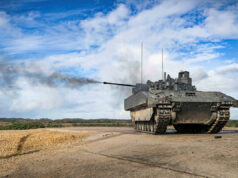
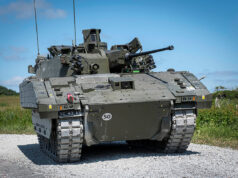
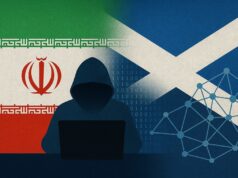

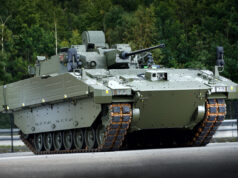
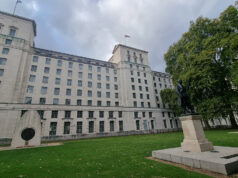


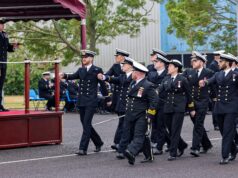


He’s brave
Retiring soon with locked in pension.
Is he? That’s very cynical. I worked for him in Colchester. He is a top officer.
It’s his job to speak his mind. It will start a debate and providing he can justify what he needs I think he will get it. It will need to be flexible & adaptable force which makes the best use of existing weaponry & that still on the drawing board. Ask now whilst there is a war in europe – there won’t be a better time.
He won’t get anything without an increase in budget, which isn’t happening I’m afraid.
Good thing Carleton-Smith doesn’t give up as easily as you Rob😀It will happen if the Government wants it to happen. This Government is actually quite positive about the military and sees it as part of the solution to a variety pf problems. Carleton-Smith will need stong arguments though as money is tight.
It’s not me giving up it’s the Chancellor stating that defence had its uplift last year. Sunak has said this several times in interviews since the invasion began. Unless he is moved on in a reshuffle and someone more pro defence replaces him then there will be no uplift.
Given the cost of living crisis, the poor economic forecasts, rising interest rates, and that MPs have turned their attention away from defence to these matters, then there isn’t sufficient pressure to change his mind. Comments from a retiring General will have little effect, despite the fact he is right.
I’ll happily be proved wrong!
The chancellor is doing his job which is to lower expectations of wage hikes and the Government generally bailing the country out. He will be saying the same thing across government.
If Carleton-Smith has a really strong case then a way will be found to quietly fund what would be a modest amount in the scheme of things. The question is how strong is his case and are there better things to spend the money on in the light of what we have leant in Ukraine?
Wow the head of the army thinks it’s too small, stop the presses. What extra tasking can he do with 82,000 vs 73,000?
Seriously, Martin? You don’t think recovery of 9,000 posts would be significant?
We could conduct an enduring brigade group operation (including National Support Element (NSE) (such as HERRICK) with 82,000.
We could deploy a strong warfighting division with NSE on a 1-shot operation with 82,000 and run at least one small-scale operation elsewhere.
Lets see, 9000 extra equates to almost a brigade. You really don’t know where to put a brigade ?
No s**t Sherlock!
We probably already have a significant portion of our land combat power deployed very thinly across a number of countries in Eastern Eaurope ‘reasuring’ NATO allies.
I have felt for a long time that even 82,000 is way too small, however, I doubt the army has managed to be able to retain / recruit enough people to reach even that modest strength in ‘normal’ time. Although, perhaps things have improved during COVID and now with Putin throwing his weight around in Ukraine?
Whatever, the actual level of the army’s strength the target strength has been too for quite sometime, 20 to 30 years time at least.
Cheers CR
We have been involved in endless small wars, whether it is Balkans, Iraq, afgan etc. No question we will have to deploy again at some point, the whole global britian rubbish means we will follow the Us into whatever war they get involved. We need to be able to long term deploy 20k troops, which it has been proven we don’t have the numbers for
Yup!
Agree, we need more and with the best equipment available to safeguard them as much as we possibly can.
That’s great, but the practical truth right now is 73,000 funded, equipped and trained, or more personnel with less of the first three. And as the Russuabs have shown, prioritising numbers over training and equipment isn’t a winning proposition either.
Fair enough. But surely you’ve heard the phrases “history repeating” and “never say never”? A defence budget should programme in the unlikely and unforseeable changes in circumstances over a reasonable period. Otherwise we are forever preparing for the past. “Peace Dividend” anyone?
exactly.
What on earth do you call the events in Ukraine then?
What about Putin’s trouble makers in Africa and Syria etc? You think that’s not confrontation with Russia? Lots of lazy members of NATO. Hard to see your logic with NATO’s borders about to double in length.
NATO soil is immune to Russia because a) NATO has a much stronger military than Russia and b) NATO has a nuclear deterrent. If you neglect A) you have to rely much more on B) which makes the situation much more precarious.
When was the last time anyone saw an Army recruitment advert on the telly? (The last one I saw involved a bunch of soldiers on patrol having to wait until one of the team finishes praying, before moving on).
I think you are playing the Devils advocate…..
I think hes a subversive element tbh.
Too true…😪
The entire AFV fleet with the exception of Challenger needs complete replacement thanks to the gross incompetence of his predecessors. That should be the rational objective for the Army leadership.
My thought entirely.
Cheers
Afraid the current fleet of Challengers need to be replaced too, and not at the rate of 2 for 3 as per current plan, but 1 for 1. Challenger 3 sounds like it would be pretty good if it were coming into service now, but by 2030 it probably won’t look so good!
In an ideal world Challenger 3 would be nothing more than a stop gap until the replacement for the M1 or Leopard comes along, but I wouldn’t be surprised if they are on the scene before the Challenger 3..
Still, not to worry, our masters now best, and if they say the way forward in the current climate is to downsize the army and perceiver with obsolete kit then they most be right. I can’t think of a time when they’ve ever got things wrong..
If it’s a bit of a surprise to him – the head of the army – then who made the decision for this ‘arbitary’ figure? I fully expect – that once Ukraine prevail over Putin – that our treasury will demand a ‘peace dividend’ and cut the army further. I despair.
The head of the army (CGS) never ever sets the Establishment figure. That is the remit of politicians.
It isn’t a case of what we can afford (basically to allow reduced taxation), but a case of what we need. Need and capability are the paramount factors. Given that it takes time to train, and even more time nowadays to produce equipment and arms it is essential that the core is capable of an effective defence while reserves and manufacturing get uo to speed. This is also where outsourcing stuff to other countries, China in particular, is foolhardy. The only way of providing any service is to ensure there is sufficient manpower and that is the fundamental reason why taxation reductions have been allowed to take precedence.
The Armed Forces are looked at as nothing more than an expense. As has been the case for many years now, bean counters are in charge, and their remit is ‘every cost’ is up to them to decide. So an Army of 72-73,000 is just an expense on a spreadsheet, and an easy target for ‘alteration’.
Until this mindset improves. the Armed forces, (especially the least favoured at the time) will continue to be prone to budget cuts, and shortages. Things have been this way since the 1980’s.
The army has been cut once or twice a decade since the end of the Korean War.
oh thats OK then …why don’t you write to Sir Mark and let him know – Im sure he will be so relieved his concerns are unfounded.
It doesn’t matter, where or with whom a future conflict is with. That is and has always been a significant failing of politicians and the public at large throughout our past and recent history. They simply do not understand how modern warfare is fought, believing the Battle of Britain spirit will see us through! With today’s technology that is certainly no longer the case. Against a peer opponent, whether fighting alone or as part of a larger NATO collective. A major conflict may only last weeks to a month. Therefore, what does matter is that the UK has an Army, Air Force and Navy well resourced in people and equipment that can contend with and overmatch a peer opponent quickly, within a week or two of fighting. The simple reason is due to the vulnerability of today’s technology and logistics, but also the time burden of training personnel to be be effective.
Perhaps Tonto has a mad idea, where he believes that a sub-launched cruise missile attack on the UK’s defence manufacturers, would stop some of the weapons being sent to Ukraine, that are being used to decimate his forces. Clearly the UK would invoke NATO’s Article 5. How long would it take for these manufacturers to beginning to rebuild and start producing again? What if Tonto, decided that a war with NATO was inevitable and decided to conduct a simultaneous strike on French, German, Italian, Dutch, Belgium and Norwegian arms manufacturing centres as well? How quickly will NATO burn through its ammunition and weapons stocks? We will be totally reliant on the US and Canada replenishing stocks.
Today’s technology although possibly recognisable to a degree from someone fighting back in WW2, cannot be produced using the same dispersed small scale manufacturing. Which was used by both Germany and the UK to protect them from aerial bombing. The methods used to fabricate today’s circuit boards for example, are far to intricate and not robust enough to quickly build up from scratch, for a sustained attritional war. Therefore, for all three services, they will have to fight with what they have and what is available in stock.
As the conflict in Ukraine has shown, by using a combination of cruise missiles and smallish UAVs, a Country’s logistics can be easily targeted and overtime significantly diminished. Rail lines and their supporting infrastructure are particularly vulnerable, but so are convoys of trucks and ships in port. The TB2 has demonstrated that without a modern cohesive air defence system. Aircraft like the TB2 can roam pretty much at will, targeting road transport and paralyse supplies getting to the front.
One of the biggest problems we would face in a future peer conflict, is how to quickly replace or supplement our current Army’s numbers. Western armies in particular, are a far cry from even those that fought in Vietnam. Down to the newest bombardier, infantryman, or booty. They have had years of training to at least get them to appreciate not only the dangers of moving around today’s battlefield, but perhaps more significantly how to fight and win. This is a major issue if we have to face a peer opponent. If our Army suffers severe losses, not only how are they going to be replaced, but perhaps more significantly how effective will these new replacements be? Ukraine as a case point shows how effective conscripted recruits are when faced with not only modern technology but also by opponents with effective training.
We need a larger Army, which includes all the key enablers, from cooks, medics, drivers, pioneers, loggies, signallers, intelligence, engineers, police, artilleryman, tankies and finally infantry. We need a larger pool of resources, so that if we loose a large number, we still have enough with sufficient experience to replace them initially, so that raw recruits can then get more time in training, before being sent out.
So around 200K like we had back in 1990 ?
No. That was an army configured for the Cold War in central Europe. We need a regular army of 120K.
Yep, c100k to 130k to ever be in a realistic situation to stand our ground. I’d say 100k for our population, wealth, interests & commitments should be an absolute minimum. Excessive cutting only enables & encourages the likes of Putin.
Cold wars back mate with a vengeance!
OK, lets bring back 1 (BR) Corps and RAFG in Germany!
Trouble is our politicos have not made one statement about increased defence spend since Russia invaded, not even in Sunak’s recent budget – no votes in Defence!
Totally agree with you. We need more troops more than ever in these troubled times
Excellent piece Davey, spot on.
How do we get you on to the ‘commons select defense committee’?!
During times of peace and stability the Army should not fall below 100,000. That should be enough to adequately assist with domestic or international natural disasters, peacekeeping, small conflicts, maintain a varied skills base and not so small that it will take decades to build up to a decent force in case we need to.
During times of uncertainty and definitely in the case where we are waging a proxy war then we ought to be looking at 120,000+. Of course troop numbers isn’t everything, the numbers needs to be in addition to decent kit. It shouldn’t be an either/or.
Options for Change (1990) reduced the army to a new figure for the post-Cold War era – down to 120,000.
The Far East South: China Sea, Taiwan
Irrelevant if you can’t eventually put boots on the ground.
Agree, a modern war needs, navel,air,ground,space and cyber assets you cannot fail to have the right force level for each domain and expect to win.
Nothing new there then, other than a ‘new bigwig’ telling re-confirming what we already know.
“it’s a bit of an arbitrary figure because it’s just a price point.” – It’s my belief that this is the key to it all.
When a business set’s about a task/forecast/business plan, it looks first to what it wants to achieve, then what it will take to achieve this and then how much it will cost. Then make a decision as to execution or not (cost/benefit etc.). We seem to have slipped into a position over time where we spend 2% of GDP (or inflate our budget to make it look that way!) & then go about figuring out what the military can look like for the money (and usually flush a few billion while we do it). This seems asinine.
I would suggest the starting point is, we decide where we want to position ourselves –
1) be neutral, leave NATO, sell the carriers, sell logistics train & strateigic lift, reduce everything to a token force (keep nukes as insurance). We could save a fortune.
2) Be a bit-part player in NATO – inflate budget to look like we’re spending 2% when we don’t. No one called out Germany for years so dropping below 2% will be fine anyway. Sell carriers, reduce everything else, when called upon, get USA to give us a ride into theatre & send 20 “specialists”. Let USA provide our security. Politicians need to be told ‘no more 2nd Gulf war, Afghanistans’ etc. though. – save a fortune.
3) Be capable of influencing world events for the better (i.e. “Global Britain”) – we have to be prepared to spend more.
A real review needs to take place with the simple starting point – “What do we want to be?” Part of answering this may be option 3 which then leads to; ‘what would we need so we can be capable of influencing world events given likely/potential adversaries?’ I’m merely a spirited amateur but even I know the high tech & training still requires some mass. Answer this, then nut-up and pay for the personnel and materiel needed in the most cost-effective way possible.
NB1 – The options above are by no means exhaustive, just there to provide examples from the radical ends of the spectrum.
NB2 – I’m not saying that “more cash” is the panacea. I’m saying a shift in our thinking is required. Decide “what?” first, then the “how much?”
I think many people forget that the Army (and all the other services) are not staffed by 100% fighty people. There are so many roles that keep any organisation running that the ones at the sharp end either directly or indirectly rely on.
Currently on the British Army website there are 102 roles described which has to be spread across the 73,000 personnel. Clearly not evenly spread. Add to that leave time, training, sickness, compassionate leave etc and the numbers start to look absolutely shocking and worrying.
Below is the list of roles taken from the website, some are not as expected. (Sorry for all the upper case)
AIR CONDITIONING FITTER, AIRCRAFT TECHNICIAN, AMMUNITION TECHNICIAN, ARMOURED CAVALRY CREWMAN, ARMOURED CORPS OFFICER, ARMOURED ENGINEER, ARMOURER, ARMY CHEF, ARMY MUSICIAN, ARMY NURSE, AVIATION COMMUNICATION SPECIALIST, AVIATION GROUNDCREW SPECIALIST, AVIATION SUPPORT OFFICER, AVIONICS TECHNICIAN
BIOMEDICAL SCIENTIST, BRICKLAYER
CARPENTER AND JOINER, CHAPLAIN, COMBAT MEDICAL TECHNICIAN, CONSTRUCTION MATERIALS TECHNICIAN, CYBER ENGINEER
DENTAL NURSE, DENTIST, DESIGN DRAUGHTSMAN, DIGITAL COMMUNICATION TECHNICIAN, DOCTOR, DOG HANDLER, DRAUGHTSMAN ELECTRICAL AND MECHANICAL, DRIVER AIR DESPATCH, DRIVER COMMUNICATIONS SPECIALIST, DRIVER ROYAL ENGINEERS
EDUCATIONAL AND TRAINING SERVICES OFFICER, ELECTRICIAN, ELECTRONIC WARFARE & SIGNALS INTELLIGENCE, ELECTRONICS TECHNICIAN, ENGINEER TROOP OFFICER, ENGINEERING PLATOON OFFICER, ENVIRONMENTAL HEALTH OFFICER, ENVIRONMENTAL HEALTH PRACTITIONER, EOD & SEARCH
FABRICATOR
GENERAL FITTER, GEOGRAPHIC TECHNICIAN, GUARDS, GUNNER – AIR DEFENCE RAPIER, GUNNER – ARMOURED AS90, GUNNER – ARTILLERY COMMAND SYSTEMS, GUNNER – ARTILLERY LOGISTIC SPECIALIST, GUNNER – ARTILLERY OFFICER, GUNNER – ARTILLERY SURVEILLANCE OBSERVER, GUNNER – CEREMONIAL, GUNNER – LIGHT GUNNER, GUNNER – STA PATROLS SPECIAL OBSERVER, GUNNER – UNMANNED AERIAL SYSTEMS, GUNNER -MISSILE SYSTEM
HEALTHCARE ASSISTANT, HOUSEHOLD CAVALRY , OFFICER, HOUSEHOLD CAVALRY SOLDIER, HR OFFICER, HR SPECIALIST
INFANTRY OFFICER, INFANTRY SOLDIER, INTELLIGENCE OFFICER
LEGAL OFFICER, LIGHT CAVALRY CREWMAN, LOGISTIC SPECIALIST ROYAL ENGINEERS, LOGISTIC SUPPLY SPECIALIST
MARINE ENGINEER, MARINER MEDICAL SUPPORT OFFICER, MENTAL HEALTH NURSE, METALSMITH, MOVEMENT CONTROLLER
OFFICER PILOT, OPERATING DEPARTMENT PRACTITIONER, OPERATOR MILITARY INTELLIGENCE, OPERATOR TECHNICAL INTELLIGENCE
PARATROOPER, PETROLEUM OPERATOR, PHARMACIST OFFICER, PHARMACY TECHNICIAN, PHYSIOTHERAPIST OFFICER, PLANT OPERATOR MECHANIC, PLASTERER AND PAINTER, PLUMBER, PORT OPERATOR, POSTAL AND COURIER OPERATOR, POWER ENGINEER
RADIOGRAPHER, RECOVERY MECHANIC, ROYAL LOGISTIC CORPS DRIVER, ROYAL LOGISTIC CORPS OFFICER, ROYAL MILITARY POLICE OFFICER, ROYAL MILITARY POLICE SOLDIER, ROYAL SIGNALS OFFICER
SUPPLY CHAIN OPERATIVE, SURVEYOR
TANK CREWMAN, TECHNICAL SUPPORT SPECIALIST, VEHICLE MECHANIC
VETERINARY OFFICER, VETERINARY TECHNICIAN.
Let’s not forget that every one of those jobs above needs the soldier to do his basic training which includes weapons and tactics before he/she
starts their trade training!
Appreciate that. My point was that when you look at all the support staff (I do not use the term in a derogatory way) you have a very diluted final fighting number.
Exactly. Only 25% of the army is Infantry.
That’s the point no one can truly for-see the flash points. But at the moment geopolitics, resource requirements, the rise of Mercantilism and global warming are getting to a point where the whole world will become a flash point.
I differ from you I cannot really see a future where we are not in at least one major war within the the next 20 years and a shed load of small interventions. If anyone thinks at countries will be doing anything other than fighting for their lives over the next half decade they have seem a different world and read different articles than myself.
key drivers of conflict will be:
1) informationTechnology: the rise of the Information Age is simply the rise of a new domain of conflict, this very much will bleed into physical conflict. A nation will need to control its information channels be that a democracy fighting fake news and manipulation, an authoritarian regime controlling its population or the steeling of state secrets/scientific advances. This has aready become a Cold War between the democracies and authoritarian regimes, it may at any time escalate from information attacks and small scale cyber attacks to larger scale cyber attacks and from that physical conflict.( Information was one way the west won the Cold War and keep it going).
2) Control of resources: modern technologies require vast amounts of very rare resources. Control of these will be vital to the future security of a nation. Already we are in a mercantile conflict with China and other authoritarian regimes over resources all over the planet as we need more and more rare elements Merchantilism will move to direct conflict ( Japan functionally decided it needed to go to war with the US over its need for resources and it took the only chance it had).
3) food and water security. This will be a key driver. You have to remember even now food insecurity is the blight of around 20% of the human race, it’s only going to get worse and will start affecting key nations as global warming bites. China is very unlikely to be able to maintain significant food production by the last quarter of the century, so it’s going to need to secure its food supplies, even countries like the US ( now a grain basket ) will loss the ability to produce meaningful amounts of food and will need to secure it.
4) The opening of new frontiers. There are a number of frontiers that will need to be exploited, this will always create conflict. These are:
A) Antarctica and the BAF, as global warming hits harder the Antarctic will be more open. It’s also got a lot of resources that will become economically viable to extract as the world needs more…the Antarctic treaty will fail and when it does the U.K. and other States will need to defend their claims as everyone will want the best bits ( yes we have them at the moment, the falklands is the gateway to the BAF and China will want it under control within the next fifty years.
B) Space, we are seeing the first development of commercial space flight, modern comms needs it, quantum communications needs it. At some point it’s going to get dicey and may spark conflict.
C) the high north and north east passage. Global warming is opening up the north west passage as a viable shipping lane, it at some point will open all year with clear seas, Russia will want to control it we will want to use it. There are also extractable resources in the high north, the nations of the high north will probably end up in conflict sometime.
5)Mercantilism. China is using a highly aggressive mercantile strategy against the west. This is deadly, the British empire was the largest in history and we had a pissant level of military might in reality against what we achieved, we gained an empire using mercantilism, China has the largest population in the world and a very large military, they are beating the west in a mercantile war, that will mean either direct military conflict or the west accepting Chinese hedgmony, guess which way it will go.
6) religion…..it’s still there, India and Pakistan are ready to kick off, Israel and the Arab states etc etc.
sorry but peace is got no chance.
Spot on
Is he retireing yet??!
Going round in circles at HMGs behest. Why not stand up to them and make a stink?
Oh, pension, and cosy consultancy job for the MIC incoming?
Easy to say when you’re halfway out the flipping door mate!
Real courage and backbone would have been to challenge some of this publicly years ago!
That aside the obsession with raw numbers clouds the fact that The Army need to get a LOT better as utilizing the resources it has first!
He’s been there long enough to be an architect of future soldier reducing supports while hanging on to every last infantry battalion.
4 BCT has none without the reserve.
The Army needs deployable effective brigades, be that from 73,000 or 82,000. Thats the priority, not just numbers.
And a RA massively improved.
Agree
Absolutely Daniele, it’s hard to take someone seriously who’s been fully part of the future Soldier strategy…
So easy to say ‘ you’re all a bunch of bast*rds’ as you head for door with your carriage clock and cardboard box.
We’ve seen it so many times before, yes men climbing the greasy pole, suddenly find their voice when the golf course is in sight…
Years ago, he was not CGS!
if they keep trying to make up the main numbers with reserves we will be no better than the Russian military now, we need a secure full time army that lives and trains day in day out, ie train hard fight easy, reserves can be good but only get to train certain days and times as most of them have full time day jobs, so playing saturday and sunday is not great, when it was the TA we were short manned for bosnia, we were asking for volunteers from other battalions to make up the numbers, a lot of TA turned up, but it took a chunk of time to train them up to the same standard as a full time member, time that could have been better used elsewhere,luckily we started out as UN before we became NATO in Bosnia, but if something happens big in a short amount of time, do you think we have the man power to stop it, and i am not convinced all NATO members would step up to the plate, something which Putin is currently figuring thinking by threatening the UK with a nuke strike saying it would minimise damage to the continent hoping the rest of Nato will back off??
It is pretty unusual for a non retired senior military member to talk about lack of anything. Normally they wait until they retire and then complain, after they have their pension and promotions all sorted. Credit to the guy, even if it won’t get picked up by the media as they are too busy with latest celebrity story and therefore won’t result in any change.
There is a minor chance that a big boost is now planned and he already knows about it and so is talk ahead of it, so he can praise the government after, and ensure his gravy train.
Well the events in Ukraine, have shown that all those Army bits HMG thought it did not need any more, in fact it does. Tanks, Artillery, Shorad, armed drones, helicopters. Cutting the UK Army below 80,000 is HM Treasury madness.
If the UK are committed to NATO then the British army (and the UK armed forces in general) needs the capacity to reinforce Europe. So who’s left defending UK national boundaries? Currently UK armed forces do not have the capacity to do both effectively. Ask yourselves, if your armed forces are out-of-country, do you feel safe sitting at home?
Those that don’t agree work for the treasury and know only of money. Those that agree are likely to have experienced real combat.
White
While I want a bigger army there is no threat of invasion to the UK mainland and probably won’t be in our lives
Invaded every day by dinghy. What if some are hostile & come armed?
And the army are doing what to stem that exactly? Nothing because it isn’t their job. Stay on topic nigel
Do you think a police armed response team could deal with a dozen+ ISIS/Daesh armed with Kalashnikovs, grenades, RPGs, PKMs, Manpads, running amok in Kent?
No, but CTPSFOs might. And the det of the CRW Wing of 22 SAS that sits in London for the purpose.
They can respond very quickly, the intelligence apparatus exists for that.
HADs Heavyweight Attack dingy’s
Perhaps the Reserve Army can envisage two roles – 1. Reinforce the Reg Army on very major expeditionary operations and 2. Lead on Military Home Defence.
They might need to be a bit bigger than 30,000.
In the 2000s the Infantry Battalions of the TA were placed in the CCRF, Civil Contingencies Reaction Force I think it was called? For that purpose.
Of course it died a death very quickly.
In the Cold War the TA included the HSF, older recruits to guard KPs.
Some contingency will still exist.
No threat of invasion in any number. If there are incidents with an enemy, either SF or terrorists, then plenty of army units won’t be deployed at any one time, including various CT elements from all arms, RS, RE, RLC, AAC, assisting UKSF with CRW and MCT Sqn permanently available in the UK.
Add to that as well MDP, civilian CTP, civilian armed police, armed civil nuclear constabulary, the numerous garrisons of the Army, the Army Reserve, the list is endless.
At Andover is SJC ( UK ) AD CT&UK Ops to respond to any incident and respond to requests for assistance.
The RN watches and patrols UK waters, and the RAF watches and defends the skies of the UKADR.
The intelligence community monitors the airwaves, the internet, and electronic spectrum for pre warning of threats. The Security Service is closer than you think as they have several regional stations and are active in the CT& CE role, assisting the police CTC who also have people, including armed officers, at several locations.
All this continues 24 hours a day 365 a year regardless of whether we deploy in numbers abroad or not.
Yes, I feel safe sitting at home.
Cheers.
It is not just about deployment its about deterence. Countries that have a hostile attitude towards the UK (e.g Iran )are emboldened by seeing our armed forces cut.
Exactly. The weaker the richest nations become, the more inviting attacking them becomes.
The Iraq and Afghanistan war told us the Army had got to small but HMG love saveing money 💰
Not really about saving money as HMG spends more than it earns, it’s about where that money goes. I’m just not sure where that is considering the NHS has less beds now than it did pre pandemic.
I guess it’s simply down to cutting your cloth to suit your budget…
If we are going to remain on the high tech, low personnel numbers road, then we have to stay clear of any operations of an enduring nature, requiring more than 1,800 troops.
Our job is going to be to kick the door in and clear the way for others to put boots on the ground in quantity.
Jay, I bet no-one in 1980 foresaw the Falklands Conflict, and no-one in 1988 foresaw Gulf War 1, etc etc.
We had up to 21,000 soldiers in NI on Op Banner – unforeseen.
How could anyone foresee the next 20 years?
The army has been on deployed operations almost continuously for the last 300 years, but less so since the end of HERRICK, I grant you. How can you doubt that boots on the ground in some quantity will not be required? We have quite a few boots on the ground right now all over the world, not necessarily in kinetic action.
I’m surprised there hasnt been much talk about the new US army weapon calibre and what the move away from the NATO standard means to the SA80.
Initially Steve, absolutely nothing. The limited issue of Colt Canada M16 derivatives and the rolling A3 upgrade of the L85 keeps the show on the road.
The US is going to slowly roll out 6.8x51mm for the Sig M5 and new support weapon.
They will also retain 5.56mm for second line duties for the foreseeable future too.
6.8×51 is an interesting round, very high pressure.
I’m hoping we simply start to introduce the M5 later in the decade. By then the kinks will have been worked out.
The rifle and sight combination will be a real game changer, allowing an infantryman to accurately put down fire at ranges previously reserved for designated Riflemen.
We should be making our own assessment of the new rifle now and deciding if to tag onto the US order, as let’s face it we would get significant economy of scale savings if we join the US rather than waiting and placing our own much smaller order.
There was a lot of reports of western troops getting outranged in Iraq/afgan, which is clearly an issue.
I would agree, but I would just hold back a tad and let Uncle Sam work out the kinks…
But after that, order in quantity and roll them out across the Armed forces.
Did the UK order 1000 AR15 in the late 60s, a decade before NATO adoption, just to get experience of 5.56. Might be a good idea to order 1000x 6.8×51 guns now, for proper evaluation.
I would certainly agree to a limited buy for trials, perhaps 200 to be dished out to SF/ RM and Para units for field trials and a proper heads up…
I wonder what the French think having started to re- equip their Armed forces with HK 416’s!
Behind the curve guys🤣🤣
Looks like we made the right decision (for once) to go full on ‘Triggers broom’ with the L85A3 rebuild programme and kick the can down the road a little longer….
Re our 1960’s AR buy, we actually used them in combat before the Americans in the Far East and it’s remained a limited issue rifle in various guises for decades, for Special Forces, Royal Marines, Para Pathfinders etc…..
War To End All Wars.
Well, Jay R, I admire your confidence. With what’s going on at the moment I think a bookmaker would have quite low odds on a war with Russia, especially their media whipping up anti UK feeling. The danger is that Putin has started that ball rolling and in the end he may lose control and feel he has to do something.
Our chief military should always be able to speak their minds, on strictly military matters, in a democracy.
Stating the blindingly obvious. Apart from our 2 carriers & nuclear deterrent, Putin & Xi must be delighted how weak our forces are.
Is the RAF so very weak?
Well it had 400+ combat jets in the 1970s.
That was Cold War and we spent up to 5% of GDP on Defence. Those jets were not as capable as today’s. The RAF has good equipment in its inventory, mostly very modern and/or upgraded. Many lament the loss of C-130s, but overall there is surely a lot of punch, sustainment and reach.
The Vulcan could reach a lot further & we had 70 of them, back then. Also the RAF was a nuclear force then with its WE177. Again not now.
John, We can all indulge in nostalgia. I remember when we had a Corps of 4 armoured divisions in Germany, 900 tanks in the inventory, nuclear artillery (tube and rockets), a division-equivalent in NI and plenty more brigades of troops in the light role in GB – plus what was ‘Out of Area’.
However, surely today the RAF could still bring a lot to the party? 101 Typhoon, 23 F-35B etc
Agreed, we need larger airforce and navy more gran a large army, let the landlocked countries use theirs first!
He is right. He will be ignored.
In 1920 who could foresee what the next 20 would bring? You don’t know anything that will, either.
Should never have scrapped the BAOR and UKLF, cut them down a bit OK, but 73,000 all arms is simply a joke, It leaves in practical terms about 20,000 combat troops. I think 100,000 all arms would be sensible in part as we are now seeing that in the age of the autonomous anti armour munitions and drones plus guided anti armour munitions that armour is now critically vulnerable. So we need a lot more heavy and light Inf , plus mech inf